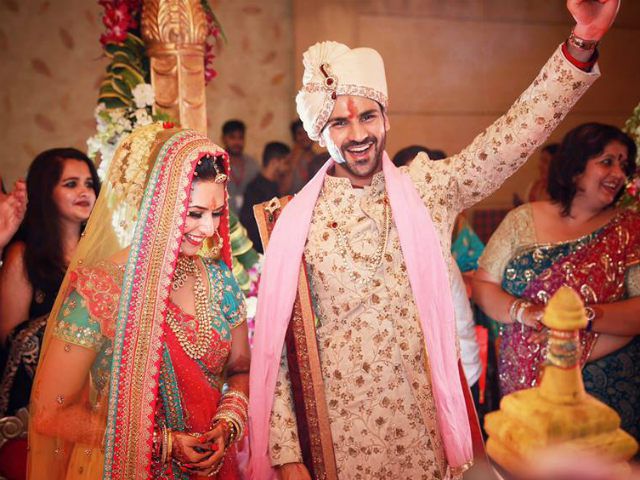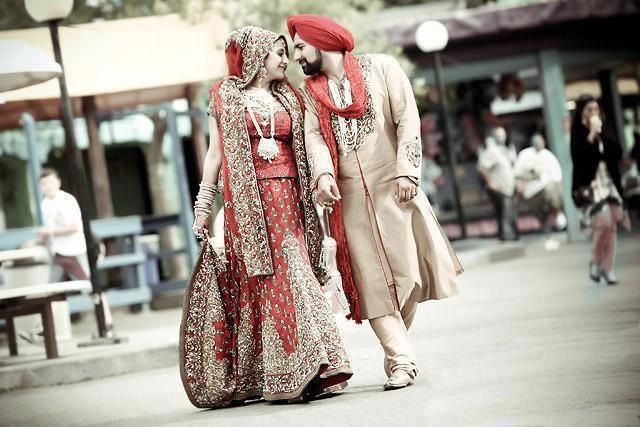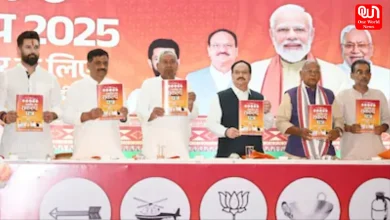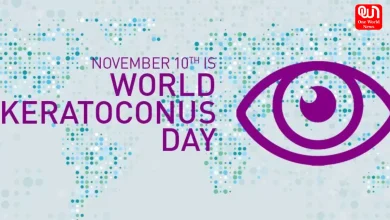Do you know how grooms are welcomed in different Indian Cultures?

Welcoming groom is funny and interesting at the same time!
Undoubtedly, Indians are known for their big fat weddings. They love to do everything grand. India is a diverse country, there are a lot of cultures and every culture has it’s own uniqueness.
One of the most exciting moments of any Indian wedding is the arrival of the groom along with his wedding procession. This wedding procession is commonly known as the baraat (especially in North India), whereas all the invitees from the groom’s side are known as the baraatis.

Related : ‘Birds Cage’ is trending these days in weddings!
Dancing on the beats of music, the groom’s procession reaches the wedding venue, where the entire family of the bride eagerly awaits to welcome them.
Welcoming the groom is an important part of every Indian wedding. Ofcourse, son- in- law holds special place and respect in India. There are different rituals that has been practice since centuries of welcoming grooms. Here are some of them, take a look.
1. Gujrati wedding: In a Gujarati wedding, welcoming of the groom is known as Ponkvu or Ponkhana. As the groom reaches the wedding venue with his family and friends, his mother-in-law receives him by performing an aarti. Following this, she playfully tries to grab his nose. Well, this is funny! The groom then enters the venue by crushing a few earthen pots into small pieces, signifying that he has the power to overcome any hindrance in his married life. The groom is then taken to the mandap, where Ganesh pujan is done followed by the rest of the ceremonies.
2. Punjabi wedding: Punjabis have huge celebrations on wedding. They do everything on a large scale. The ritual of welcoming the groom and his procession in Punjabi culture is known as milni. The ritual is followed in both, the Sikh as well as the Hindu-Punjabi weddings. It is intended to introduce the family members of both the sides with each other. Once the baraat reaches the venue, the bride’s brother receives the groom and brings him down from his ghodi.And before starting the ritual of milni, an ardaas (prayer) is performed by the priest. Following this, the milni (meeting and introduction) of the main male members of the bride’s family is done with the respective male members of the groom’s family. Here, brother play important role. During each meeting, the two members exchange garlands and the bride’s relatives gift cash and clothes to the groom’s relatives. These gifts, known as shagun, are considered to be a token of good luck.

Related : Nail it this wedding season with Gold and White
3. South Indian wedding:Maharashtraian ladies style of welcoming the groom is attractive again.Once the groom reaches the wedding venue with his relatives and guests, Seemaan puja is conducted by the bride’s parents.While earlier this puja used to be conducted at the boundary of the bride’s home or village, but these days, this ritual is performed at the entrance of the wedding venue.
In this puja, the bride’s parents first wash the feet of the groom. Then they apply kumkum tilak (vermilion mark) and akshata (turmeric stained rice) on his forehead while performing an aarti. The groom is then made to sit on a square stool, chaurang, where he is showered with gifts and blessings by the bride’s parents.
4. Assamese wedding:Now, it comes to north east. With friends and relatives on his side, the groom reaches the wedding venue. But, entering the venue is not an easy task for the groom or his procession, as he is welcomed by a shower of rice that is thrown on them by the bride’s family. The groom’s best friend is supposed to hold an umbrella and save him from being hit. He even has to pay heavy cash (shagun)to enter the marriage venue. Once things settle down, the bride’s mother performs aarti, and her sister washes the groom’s feet. The bride’s sister is also rewarded after completing the ceremony with a gift. The groom generally dresses up in traditional dhoti, kurta and cheleng ( a form of a shawl) given by the bride’s side. Next, the bride’s brother lifts up the groom and take him to the wedding hall.
5. Tamil wedding: Last but not the least is Tamil wedding.On the wedding day, the bride and the groom are supposed to take the mangalsnanam (ceremonial bath). This happens in the morning during an auspicious hour as suggested by the priest. The bride and the groom are anointed with kumkum, turmeric, and oil by their parents at their respective homes. Just before the time of wedding ceremony, the groom performs the ceremony of Kashi Yatra. Dressed in a veshti (the traditional garment for men), he pretends as if he is heading to Kashi, and is no longer interested in becoming a householder.
Have a news story, an interesting write-up or simply a suggestion? Write to us at info@oneworldnews.in







